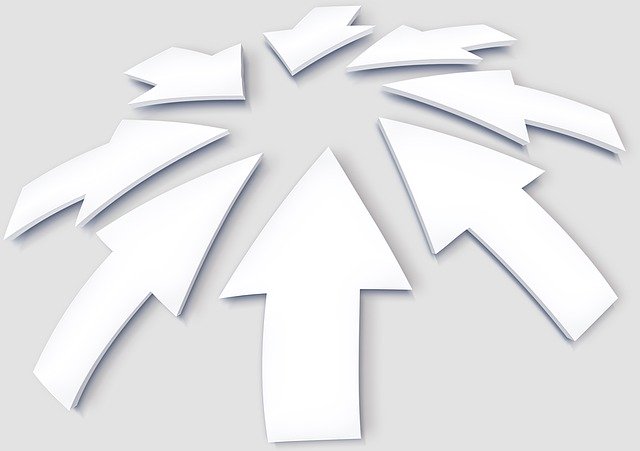In her book The Zen Leader Ginny Whitelaw explains that to achieve real change in the way we lead, we need to make a number of “flips” (10 in fact), and one of them is “from tension to extension”. Each of the flips involve reframing – changing the way we think about our self, others and our situation.
Tension is mirrored in the body
When we are tense, we contract our body, blocking the flow of energy and our capacity to make a real impact. The words we use to describe a tense person convey this idea of contraction – “uptight”, “wound up like a spring”, “ready to pounce”. Tension affects not only our thoughts, emotions and behaviour, it is mirrored in our bodies through muscle pain, a stiff neck, headaches, swollen and sore ankles or back pain. Sometimes tension can be experienced as overall body pain or fibromyalgia.
The paradox is that we need the process of tension and muscle contraction to be able to move – to move the bones in our arms and legs for instance. So physical tension and contraction are natural processes and Ginny explains how they function for body movement through her in-depth biophysical knowledge. She also points out, however, that the problem arises when the process becomes stuck, just as we can become stuck through our tension – unable to move forward, resistant to change, unwilling to explore new ways or unable to see a way ahead.
Impact of tension in a leader
Research has consistently confirmed that our mood as a leader is contagious – if we are negative, we develop a negatively oriented team. Some of the impacts of tension in a leader are disengagement of staff (through poor leader modelling), withholding of information (for fear of an angry reaction), conflict between staff (a lack of cohesion and common goals) and inertia (absence of positive leadership energy). So, there are very real costs for the tense leader, including staff avoidance.
Extension: how to let go of tension as a leader
The concept of extension (or expansion) builds on Ginny’s earlier discussion of the flip from “coping to transforming”. She points out that the concept of moving from contraction (tension) to extension underpins much of Eastern philosophy and martial arts such as Tai Chi. Contraction constricts, extension releases energy. The challenge for a leader is to be able to move beyond the feeling of being “stuck” to achieving flow and productivity and engagement.
Ginny illustrates the power of extension by a brief physical exercise that involves contracting the muscles in the arms to create movement and then extending them to realise the flow of energy through the extended arm and hand. She suggests that there are three principles underlying the flip from tension to extension:
- Rhythmic movement not relentless pushing or forcing – when we are tense, we break our natural rhythms of sleep, breathing, regeneration and relaxation and we fail to find time to unwind. Ginny argues that we need to recharge ourselves like we do our phone battery – by plugging into our internal and external energy sources. She suggests that we take brief breaks of two minutes every 90 minutes (others suggest every hour) supplemented by extended breaks of 30 minutes to undertake exercise or meditation (or Tai Chi) once or twice a day. We have previously offered the practice of making awareness (and not your phone) your default when waiting, enabling you to tap into the natural rhythm of your breathing and the flow of universal energy that surrounds you.
- Develop downward energy flow to offset the tendency to move energy up – the words we use reflect this redirection. When we are tense, we are “uptight” in more ways than one, when we are opening to expanding and redirecting our energy, we are grounded, calm and begin to “settle down”. Ginny maintains that we can direct our energy downwards to our hara, our energetic center, through deep breathing and centering exercises that she offers on her Zen Leader website.
- Direct energy out, not in – outwards energy is needed to generate a vision, develop and implement a strategy and pursue achievement of goals. Ginny describes a simple physical exercise to illustrate this energy flow and develop the practice of energy alignment.
Building on these three principles, Ginny offers a series of reflective questions designed to help us to generate more energy and achieve a better alignment of our energy with our purpose. She reinforces the power of mindfulness practices to “free up energy”.
Reflection
Many of us are tense as a result of time pressures, work and family challenges and/or the demands of caring for a relative or friend. We intensify this tension through trying to live up to the assumed expectations of others and own unrealistic expectations. Tension affects our thoughts, feelings, behaviour and our bodies. It constricts and diverts our energy leading to exhaustion, frustration and feeling drained. Extension practices build energy, achieve resonance and encourage engagement. As we grow in mindfulness, we can free up our energy flow and progressively build our energy alignment.
___________________________________________
Image by Gerd Altmann from Pixabay
By Ron Passfield – Copyright (Creative Commons license, Attribution–Non Commercial–No Derivatives)
Disclosure: If you purchase a product through this site, I may earn a commission which will help to pay for the site, the associated Meetup group and the resources to support the blog.


